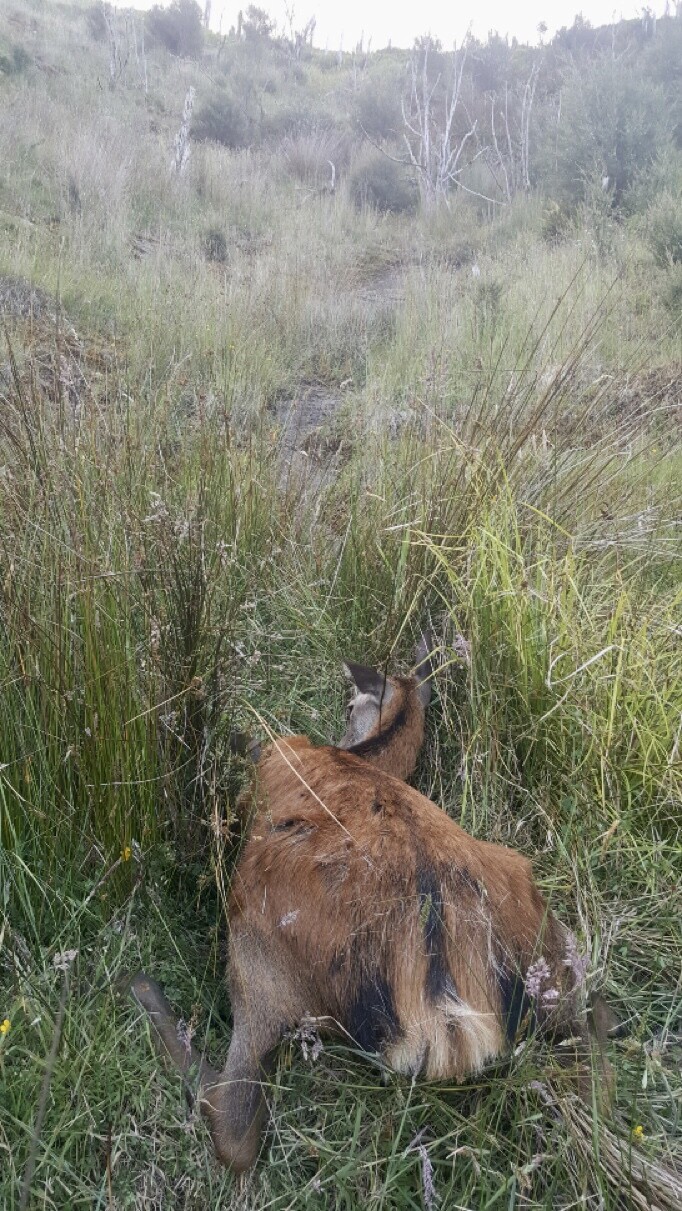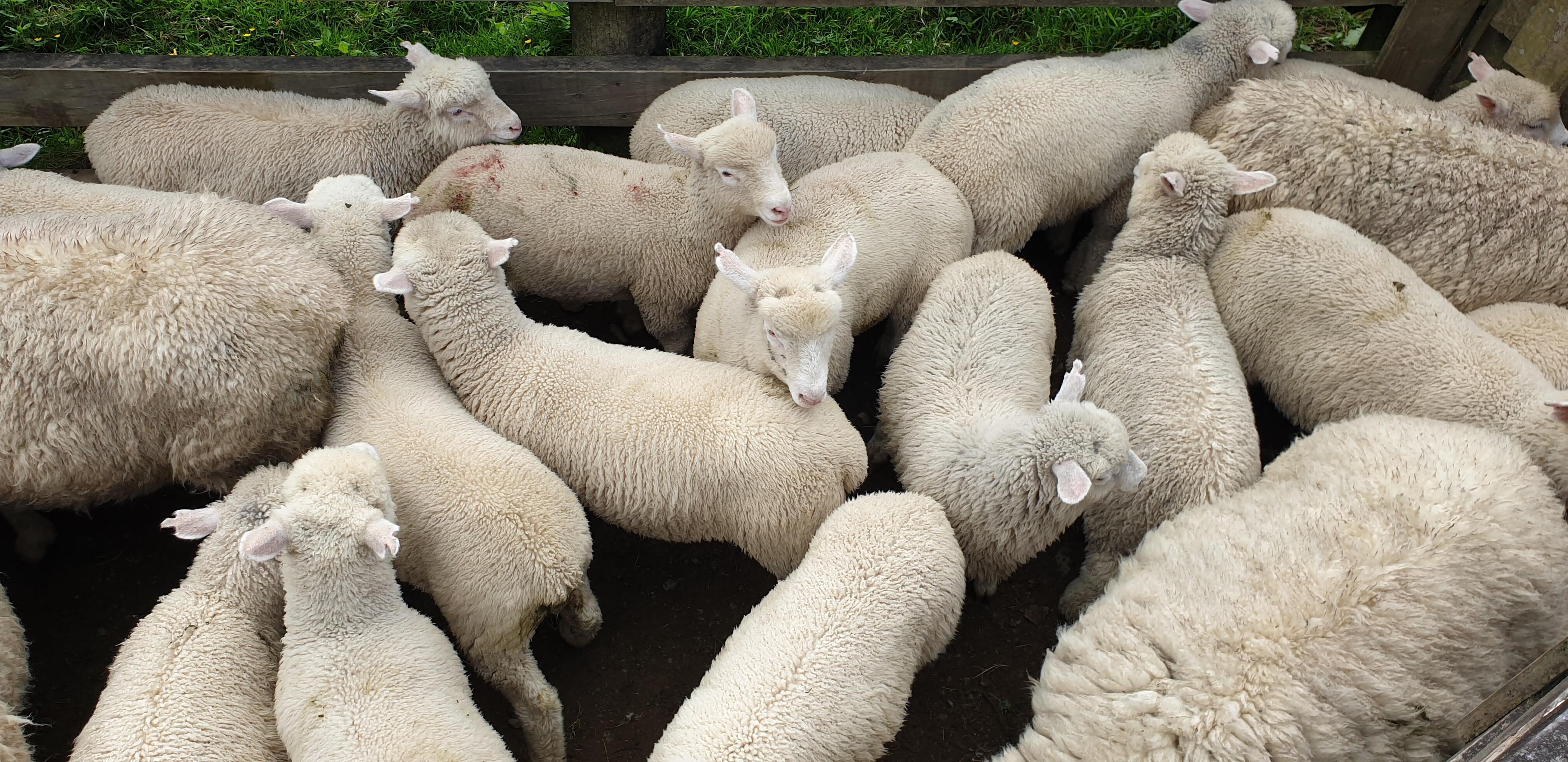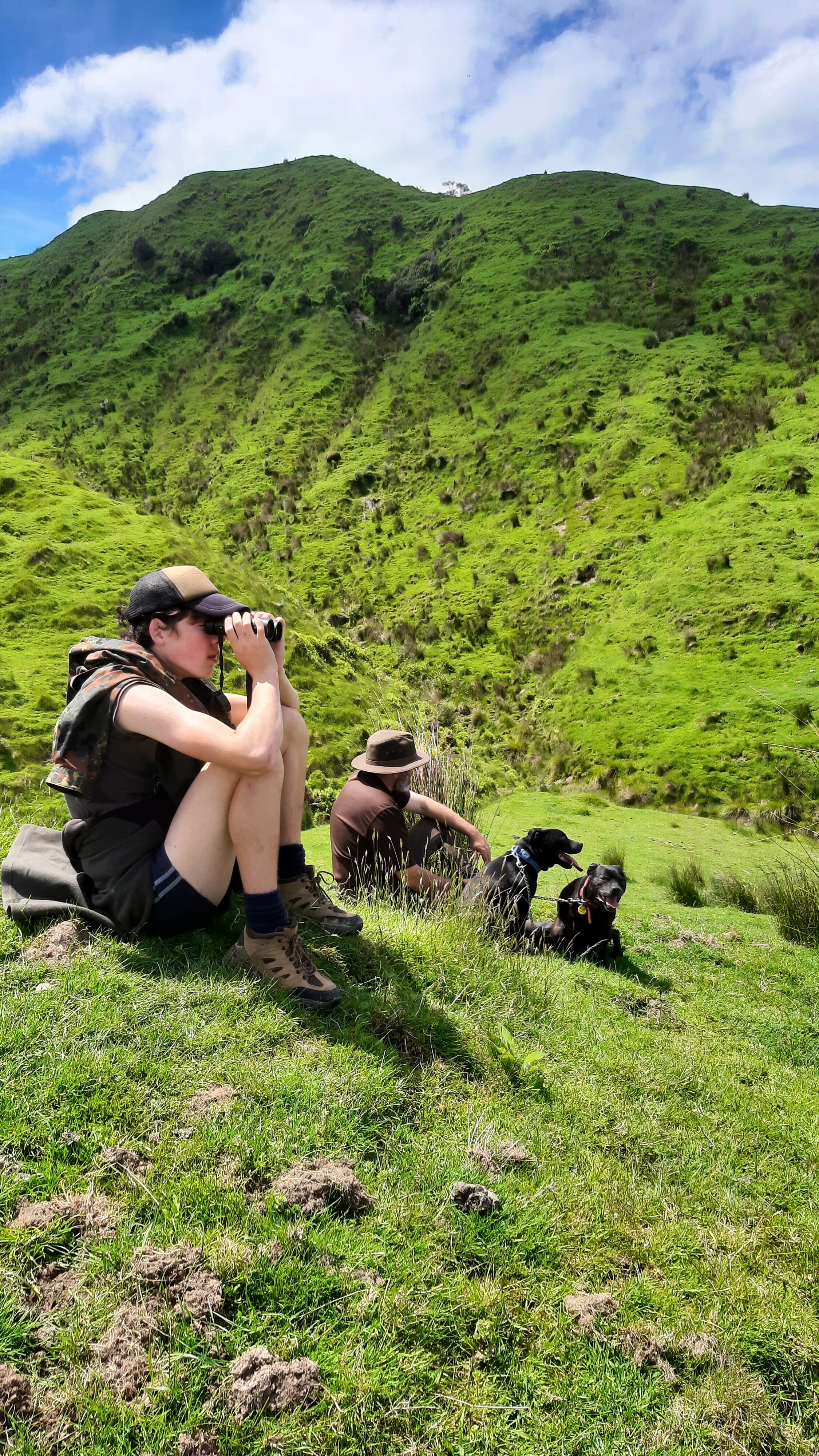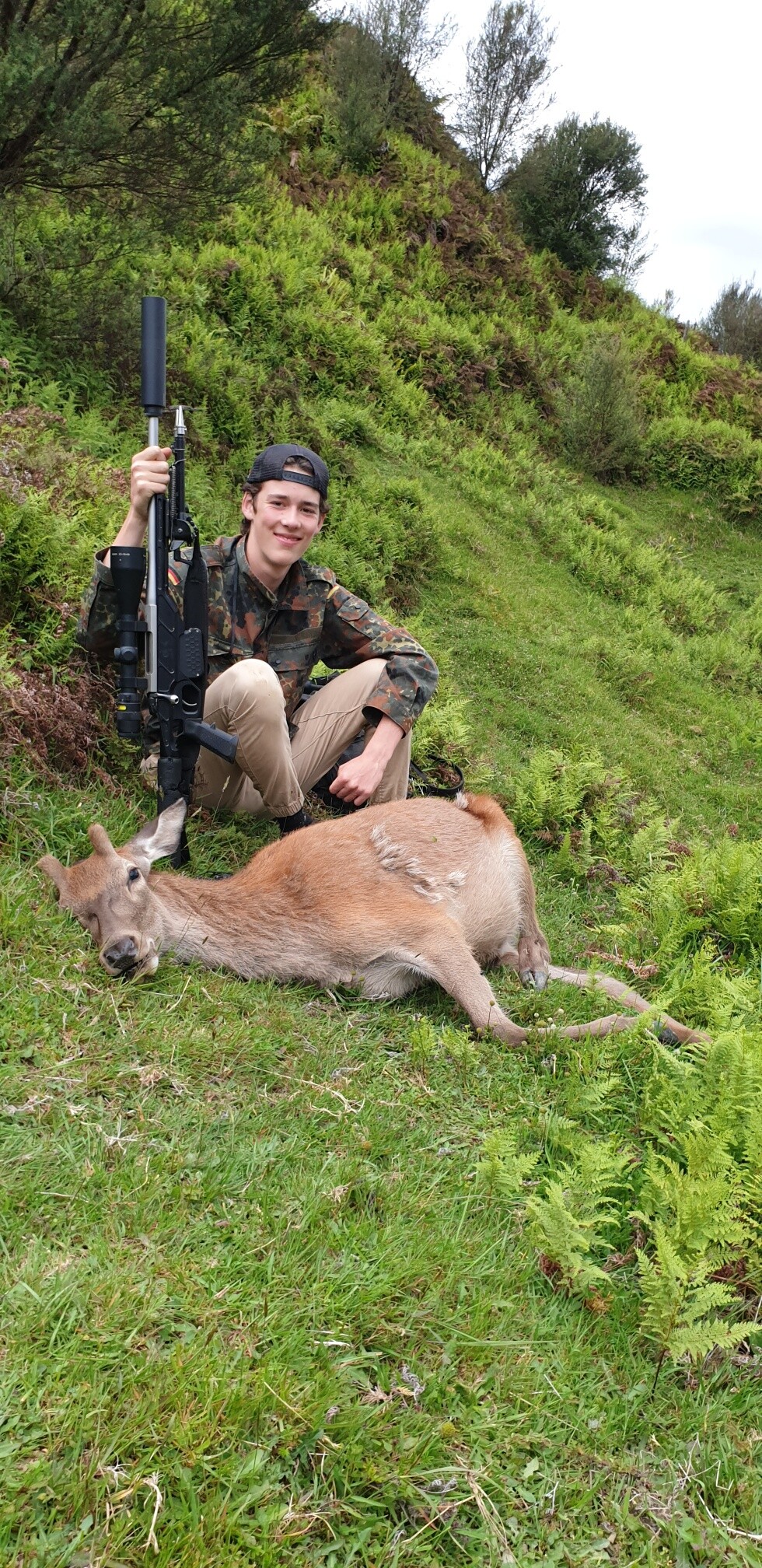One of the adaptations you must make being off-grid and offline, is to make decisions based entirely what you can see and feel for yourself. No handy short-term weather forecast or rain radar to guide your plans for the day.
The wind here that is everything - it can be your friend or it can be extremely annoying and unfriendly. The primary wind direction will be modified by the topography, with gully winds and tops winds often at odds. In steep country, wind can follow you around a face as you sidle from spur to spur, announcing your presence to all game animals far and wide. That gets right up my nose too.
After plenty of rain and strong southerlies, the farm tracks were a mud bath. Last week was a mixed bag of weather, but for the most part dry, so tracks transformed gradually from slush, to sticky clay that clogs up the tyres, to dusty & bumpy. At any given moment, the wind could be coming from just about anywhere. Conditions were highly variable, with two evenings where the wind was practically nil. Decisions on where to go were last minute - no internet, so look up at what the clouds are doing, check the wind direction on the ground with the puffer, look for rain, check the sun position. Decide, go.
With no more fridge capacity, the attention had turned to straightforward culling of goats, deer and if possible, pigs. Any goat, any red deer, but when it comes to pigs, sows and suckers only. Pigs are afforded different status and privileges here.
As is usual, goats are easy to track down and twenty or so were culled with the .308 at between 150-300m. They are left for the pigs.
Deer were spotted at various ranges between 50-250m, glassing down into clearings in the scrub, occasionally on clear spurs and in the bottom of the wider gullies. There are that many deer in there that you’re almost bound to see a deer or two at any time of the day. Shot placement is different to normal; due to the gradient; a -40° shot is not unusual and you’re likely to be shooting them downwards through the upper shoulders. I am very careful to ensure the point of aim is well forward, and high on the torso. Most shots hit the spine / CNS and then through the hilar zone in the front lungs. Unsurprisingly, most of them are DRT, don’t move an inch before starting the death throes.
The mature hinds have started fawning - I saw my first red fawn early last week. But they are very scarce obviously - pretty much all we see are stags, spikers and small yearlings, with the occasional old, dry hind. If a single deer is observed in a small clearing - the assumption is there will be some more there too, I just can’t see them. Consequently, deer are frequently shot in 2s and 3s. After the first one is shot - ideally DRT - the others show themselves as they panic wondering what the hell just happened. So reloading and staying on the rifle for a few minutes afterwards really pays dividends.
I don’t particularly like shooting deer like this. It’s the 100% pest control part, the part that’s at the heart of the trust between the landowner and me. I’m here to shoot deer and fix stuff. Shoot deer, fill up with venison, then shoot more. Fix whatever needs fixing.
OK.
There’s no effort at meat recovery unless the animal just happens to be on a track that you’ll use anyway. The meat is otherwise entirely wasted, pig food. You can’t get to it, can’t / won’t carry it out, no time, no refrigeration capacity, no one in easy reach that wants it… and last but not least… there’s 10,000 blowflies for every deer. Ultimately the decision is easy to make - just to your job. The land owner instructions are clear - there’s no expectation of recovery, the pigs will usually consume carcasses (and their maggots) faster than the flies will breed, the sheep have literally just been dipped for flystrike.
That’s what you have to do. Learn to shoot deer to waste.
Talking of dipping, I got roped into a farm wide muster for lamb drenching and flock dipping. Simple working the race, keeping them flowing through. Being impressed by Huntaways that can scale 6ft cattle yard gates and fences from pen to pen. Climbing over from off the top of a sheep, often ending up underneath them. Not being in the slightest bit concerned. Man these dogs take a hiding, especially with the rams.
Hill country sheep farming is going through a very tough, lean period. Sheep prices have fallen greatly. Ewes were sold recently for less than half the price paid a year ago. The lamb schedule is over 30% down and predicted to fall further. Fertiliser is well up (though not as high as it was), fuel is well up, interest rates have significantly increased. Basically all input, application, sundries and mortgage costs have increased, against a dramatically reduced revenue.
Development projects are on hold. Tracks and fences need maintenance. The scrub is still growing. Sheep still need shearing, and the price of wool is next to worthless.
If you’re a sheep, you don’t know you’re worth a lot less than a year ago.
Plenty going on, and before I knew it, the family & dogs arrived just before dark. I ferried their voluminous goods to the cabin with the quad while they marched through the mud along the path to the cabin. Their arrival seemed like a good excuse for a shindig.
The next day, we cut a plan. My eldest is staying on with me, mum & the younger are only here for two full days. We start with a late rise, a solid brunch, then an armed walk into the centre of the farm to hunt down a problem sow and her suckers. The Staffies cast ahead - I would have been happy for them to catch a couple of the suckers. So would they. But alas the sow evaded us. But I know where she lives…
The gradient increased and weary 50-somethings slowed and occasionally stopped for a breather. The 11yr old dogs were up for it and happy for the frequent dams to cool off in. Young son continued on as if it were a stroll in the park - bionic. Oh to be a fit 15yr old again… The centre of the farm is dominated by spectacular high knobs and bluffs on the end of steep spurs, congregating high above a deep gorge. Steep , cleared sheep country with lots of bushy gullies and regular ungulate invaders.
Right on the end of the one high grassy point, under a now bright blue sky, we glassed far and wide.
The boy spotted four red stags browsing a recently sprayed face, on new grass. 850m away, and unreachable. But the sighting had the desired effect… Stu was pumped up and wanting to hunt. I said to him, lad, take the .308 and go prone and practice dry firing on those deer. For the next half hour or more, the young fella practiced with the 2.5-10x56 Trijicon, learning the mildot drops. Place the buttstock comfortably in the shoulder, hold steady, breathe, break. Mum and dad sat basking in the hot sun. Happy days.
I could feel the keenness on the walk back. Planning was done, tactics were discussed. I pulled out these diagrams and we went through anatomy and angles again. I told him several times, we’re looking for deer that are close enough not to have to worry about holdover or wind. We’re not going full Sniper Elite, ok? Ok Dad. Rations were handed out, the gear checked. Onwards.
We rode up to the watershed track and parked up on an old honey bee site. Walking through the bush, the wind was entirely absent. Pushing through rimu, kauri and pangas, getting caught on bush lawyer, trying not to trip on latana. We kept just down behind the bush edge, stopping to glass frequently. We emerged at our destination in good time - two hours of shooting light left. Deer o’clock.
What’s that? A big black lump on the edge of a spur, under a ledge of crown fern. Then a ginger brown smaller lump crossed in front of the black blob. Ah ha, pigs. We observed them for half an hour, counting the weaners and noting the size of the sow. But we weren’t here for pigs.
Deer were seen at long range. One stag was a “legitimate target” according to Private Herbert, despite being over 750m away. We had a quick game of “estimate the range”… Er, work to be done there.
I sent his nibs off on a quick recce. Crouching and commando crawling like a pro, he slunk off and glassed the adjacent face, returning with an excitable sitrep. Dad, there’s several reds over there, range 350-400m. Righto, lets go. (Minor discussion, as it was suggested that “we can just shoot one from here.”)
The trick was to work down and then along the ridge just behind the bush line. It was ok going, had to be as quiet as possible. Our biggest risk was bumping another deer we haven’t seen, and it raising the alarm. Quick discussion on deer bumping. That’s exactly what we then did, 30 seconds later. Rounding a decent thick tree trunk, I froze as a red stag stared straight at me, about 30m. If he turned into open country and ran noisily downhill through the crown fern, we were in trouble. Thankfully, he quietly trotted down into the darkness of the native. Crisis averted. No alarms raised. Exciting.
The range to the target was closed further. The breeze picked up slightly and blew across us. Shit, not good. If we got any closer, we’d risk getting too close to their wind. I pointed to the flat spot there by the low ferns, what’s that range? 221m. Ok, good enough, rifle is zeroed at 200m, we know it’s bang on. We’ve got cover, a decent pozzie, clear line of sight. Time to get down to business.
Stuart found his body position quickly and calmly. Setup the bipod legs, checked his magnification, adjusted the brightness of his illuminated dot, concentrated on shouldering the rifle firmly but naturally. No unnecessary tension. He pushed a round into the chamber with his fingers, and closed the bolt slowly whilst holding the rounds in the magazine down. We spoke clearly and succinctly about shot placement. The target animal was a spiker, lying down, quartering, showing a clear whole neck & shoulder.
Follow the centreline of the neck down to where it joins the torso. Find the front edge of the shoulder. See the area between the shoulder and where the neck joins. There. Aim with the bottom of the illuminated dot on your spot. Just a wee bit of holdover.
Breathe. Tell me when you’re ready.
[Breathing sounds…]
Ready.
[Several seconds pause… … …]
BANG!
The deer spasmed and its head flopped onto the ground. Some minor kicks and then still. Stuart had just shot his first deer, and it didn’t move an inch. Stone dead right there. Like a pro. He quickly reloaded and kept his aim on the deer, just in case. A couple more appeared behind it, but they were not part of the plan. Just one. Get one job done perfect, worry about the rest another day.
I was ecstatic. I’m grinning like a goon now remembering it. Stu was ecstatic too, in a measured way. He was feeling very cool. Like he’d just stepped up a notch. Promotion… Kid, juvenile, young man. Well on the way to the young man part. We ran through the “rifle safe” procedure, unloaded and got ready to go find Stu’s deer.
As I hobbled down the slippery track, Stu took off at a rate of knots. No way could I keep up. He nearly went down the wrong spur, so I corrected his aim and before long I heard the call… “Found it!” Huffing and puffing on wobbly knees, I caught up and set about the business of recording the significant family moment for the record.
The shot placement could not have been any better. Like, spot on. Right on the money.
Young fella was pleased with himself and helpful with breaking down the animal. We took the backstraps and hindquarters, some forequarters. Wasn’t going to gut it, as we knew it would be messy inside. There was enough time to let the packets of meat cool a bit before we had to push off back the way we’d come, i.e. uphill for ages. Big sweat on a muggy night, and what a feeling at the top. Short, flattish hobble to the bike from there.
Unfortunately Mum’s hunt the following evening was wrecked by the wind, which misbehaved as only gully winds can. We ended up quitting after being winded twice, in favour of a big fat barbecue feast. Next day was wet as, and Mum & son had to go home anyway, leaving me with a stray 17yr old and two elderly Staffies.
The lad left his backstraps for camp food - marinaded in mint sauce, ground pepper and salt for four days. Cooked hot on a Weber. Oh my gawd. Primo, delicious.

Welcome guest, is this your first visit? Create Account now to join.
Welcome to the NZ Hunting and Shooting Forums.
Search Forums
User Tag List
Results 1 to 15 of 15
 67Likes
67Likes
Thread: A Significant Family Moment (and other stuff)
Threaded View
-
05-12-2023, 10:55 AM #1
A Significant Family Moment (and other stuff)
Just...say...the...word
Similar Threads
-
Family Stuff Video
By craigc in forum The MagazineReplies: 1Last Post: 12-12-2019, 08:29 PM -
Family stuff
By Tahr in forum The MagazineReplies: 15Last Post: 09-12-2019, 08:04 PM -
The moment when......
By HNTMAD in forum HuntingReplies: 54Last Post: 14-12-2015, 07:41 PM -
OH Sh!t moment.
By OgreLH in forum Firearm SafetyReplies: 24Last Post: 18-11-2014, 06:28 AM
Tags for this Thread
Welcome to NZ Hunting and Shooting Forums! We see you're new here, or arn't logged in. Create an account, and Login for full access including our FREE BUY and SELL section Register NOW!!





 LinkBack URL
LinkBack URL About LinkBacks
About LinkBacks














 Reply With Quote
Reply With Quote


Bookmarks